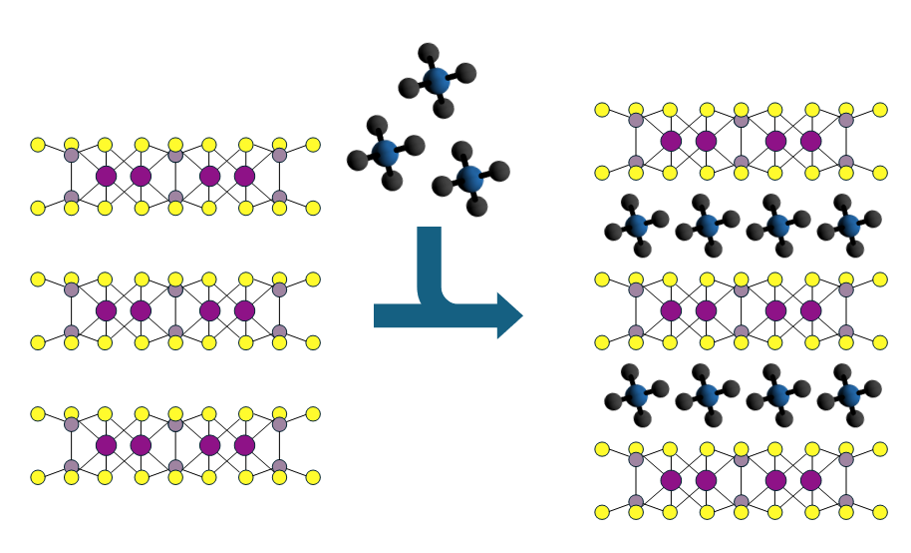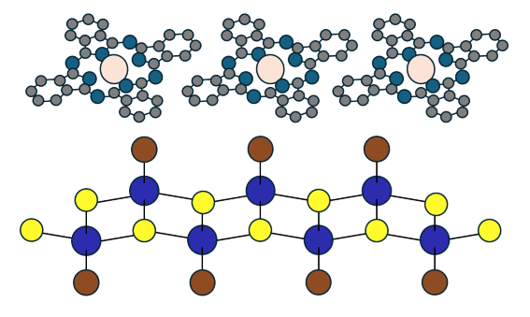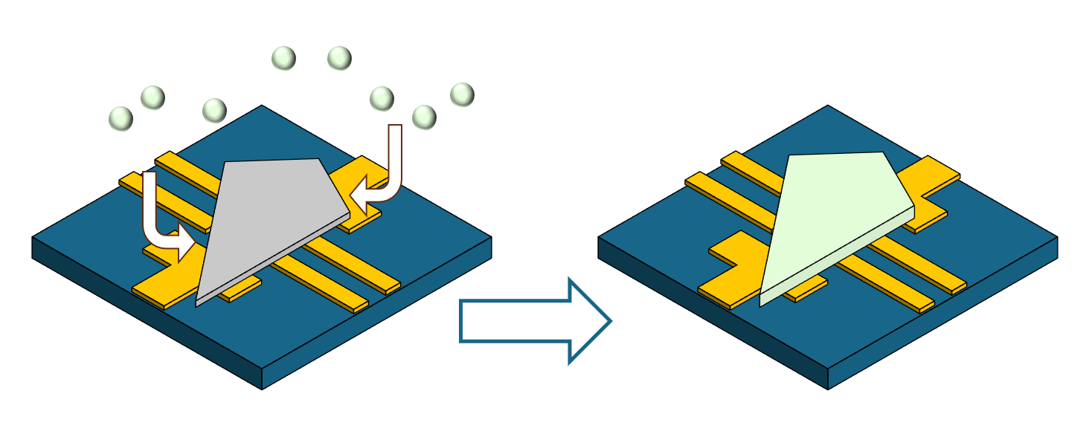

Intercalation is the insertion of guest species into the gap between the layers of van der Waals materials. In our research, we typically intercalate organic molecules, creating hybrid organic-inorganic superlattices with tailored functionalities. By selecting specific functional molecules as guest species, we can modify electronic, magnetic, and optical properties, enabling the emergence of new quantum phases and behaviors. Additionally, by controlling the molecular arrangement within the gap, we introduce an extra tuning parameter, providing a powerful way to finely adjust material properties at the atomic scale.

When van der Waals materials are isolated at the ultrathin limit, their properties become highly sensitive to surface modifications. We use functional molecules to engineer their electronic structure, introducing new magnetic and optical responses, and paving the way for novel hybrid devices and quantum materials.
A key strategy we employ is molecular self-assembly, which enables the formation of crystalline molecular monolayers at the surface of 2D materials. These ordered molecular layers act as an organic counterpart to inorganic 2D materials, opening new possibilities for hybrid interfaces with tailored properties.

We explore hybrid materials as a tunable platform for advanced electronics. By leveraging materials with tailored optical, magnetic, and electronic responses, we aim to impact a wide range of technological areas, from optoelectronics and spintronics to quantum computing.
Our approach extends beyond material synthesis—we integrate these few-nanometer-thick hybrid materials into nanoscale devices, enabling precise control over their properties. This allows us to study and harness emergent quantum phenomena, paving the way for novel functional devices and unconventional computing architectures.

Our research spans the entire process of developing hybrid materials, from synthesis to device integration and functional characterization. We start by synthesizing hybrid organic-inorganic materials and characterizing their structural and electronic properties using techniques such as X-ray diffraction (XRD), micro-Raman spectroscopy, and X-ray photoelectron spectroscopy (XPS).
We then integrate these materials into nanoscale devices and perform optoelectronic and magnetotransport measurements to assess their potential for specific applications. This comprehensive approach allows us to explore new physical phenomena and engineer materials with tailored properties for advanced electronic technologies.